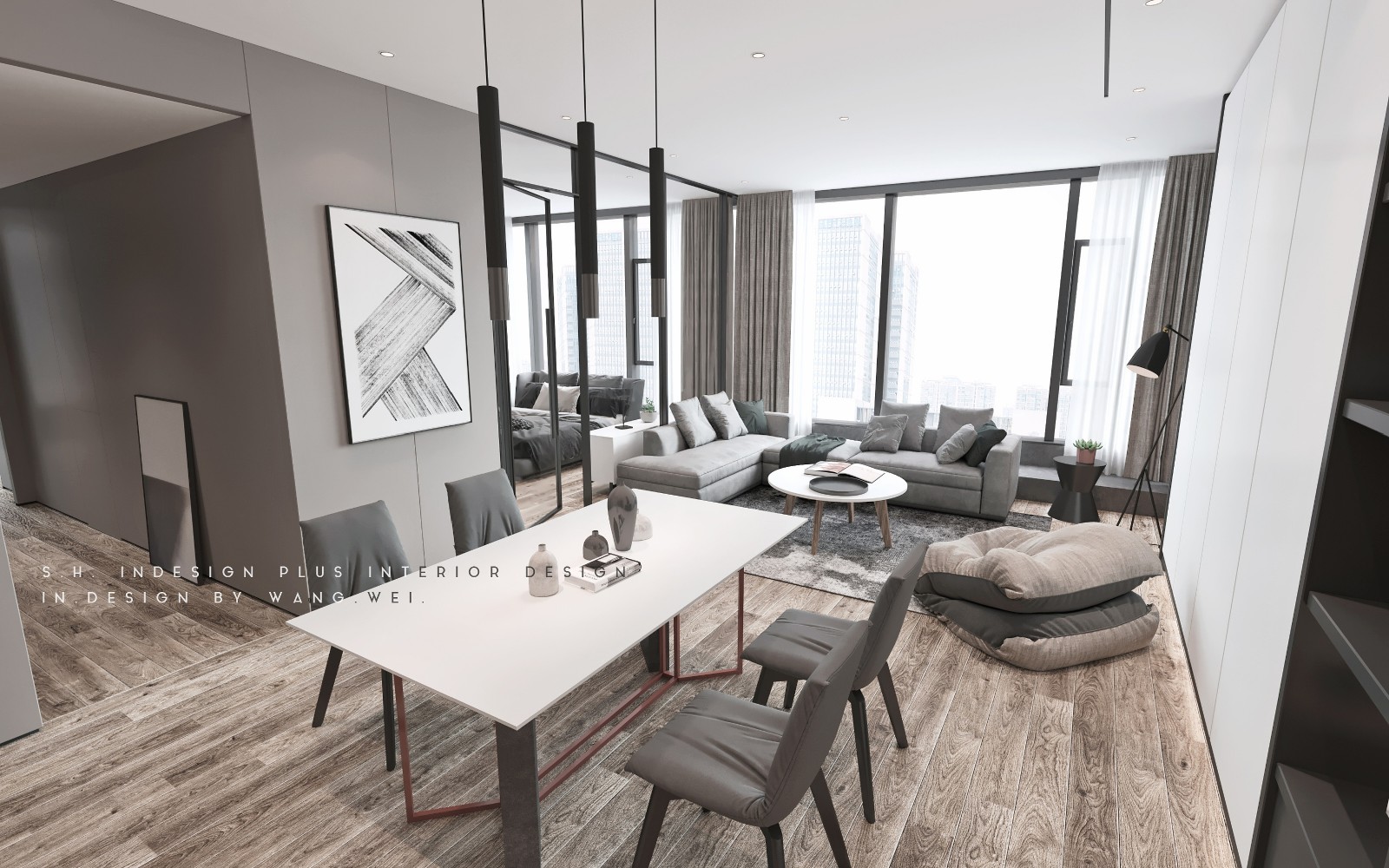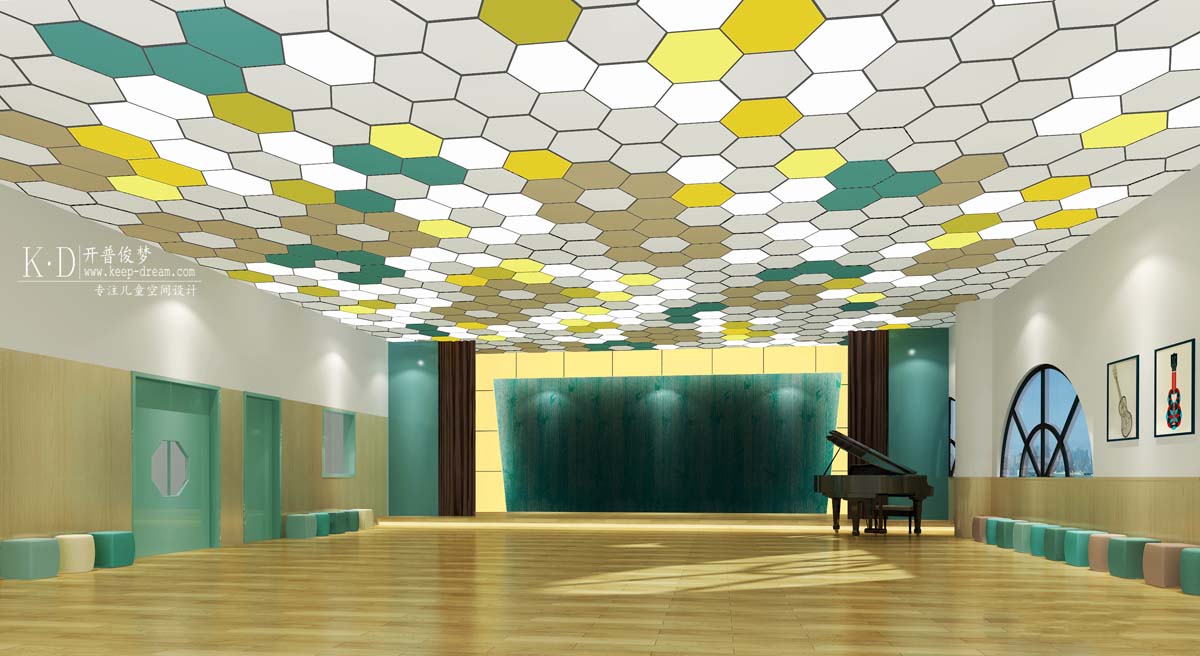BRIC Art Space maison h
2018-03-26 19:00
架构师提供的文本描述。这一艺术空间以当代中国艺术家抽象绘画中的形而上学空白为出发点。它使用自然光,简单的黑色笔触和半透明的材料来创造一个模糊的,梦幻般的物理领域。该项目位于北京798艺术区内,是一家原工厂的翻新工程,最初建于上世纪70年代毛泽东的“大跃进”时期。
Text description provided by the architects. This art space takes the metaphysical blank space in abstract paintings by contemporary Chinese artists as its starting point. It uses natural light, simple black strokes and translucent materials to create a fuzzy, dream-like physical realm. The project is located within Beijing’s 798 Arts District, as a renovation of a former factory, originally build in the 1970’s during Mao Zedong’s Great Leap Forward.
该项目被认为是一个交流空间,对任何对艺术、文化和精神主题感兴趣的人开放。考虑到它以前的工业功能,它几乎是自相矛盾的并列。
The project is conceived as a communication space, open to anybody interested in artistic, cultural and spiritual topics. An almost paradoxical juxtaposition, given its previous industrial function.
这个项目是在阿姆斯特丹和北京之间的一次长途飞行中偶然遇到的.客户是一位著名的认知科学家,对形而上学感兴趣,搬到北京;建筑师是一位年轻的学者,研究认知空间感知,总部设在北京。他们对东西方抽象艺术与形而上学的比较有着共同的兴趣。在飞行期间,他们设想在北京创造一个艺术空间,为讨论即将到来的艺术文化的形而上学创造一个场所。
The project started with a chance encounter during a long-haul flight between Amsterdam and Beijing. The client a renowned cognitive scientist with an interest in metaphysics, moving to Beijing; the architect a young academic studying the cognitive perception of space, based in Beijing. They shared an interest in the comparison between Western and Eastern abstract art and metaphysics. During the flight they conceived the idea to create an art space in Beijing that would create a place for discussing the metaphysics of an upcoming art culture.
我们最终创造了一个身临其境的“空白”,有着移动的平面,因为当代中国艺术家对捕捉“未知”、“存在”而不是“语境”感兴趣。他们专注于抽象的、跨文化的、形而上学的话题,如空间、时间、变化和转变、变化背后的持久和表象背后的无形。
We eventually created an immersive, ‘blank space’, with moving planes, as contemporary Chinese artists are interested in capturing 'the unknown', the 'being', rather than the 'context'. They dwell on abstract, inter cultural, metaphysical topics such as space, time, change and transformation, the lasting behind the change, the invisible behind the appearances.
同时,我们也从西方抽象艺术空间中的类似引用中汲取了灵感,比如德克萨斯州休斯顿圣托马斯大学的马克·罗斯科教堂(MarkRothko‘sChapel)。罗斯科说,艺术必须与现实达到身临其境的统一。因此,我们在内部空白领域和受污染的外部创建了一个带有缓冲区的空间。在内部领域,体积和平面在空间内相交,形成灵活的区域,可以用来容纳不同的功能和人流。
At the same time, we drew inspiration from comparable references in Western abstract art spaces, such as Mark Rothko’s Chapel at the University of St. Thomas in Houston, Texas. Rothko says art must reach an immersive unity with the reality. We thus created a space with a buffer between the inner blank realm and the tainted outside. In the inner realm volumes and planes intersect within the space to create flexible areas which can be used to house different functions and flows of people.
这些概念上的野心是通过一种我们称之为“最小设计,最大灵活性”的方法实现的。利用最少的材料和结构,我们的目标是通过空间设计创造最大的影响。我们创造了灵活的空间和系统,其中空间乘以其功能能力。
These conceptual ambitions were realized with an approach we call ‘Minimal Design, Maximum Flexibility’. Using the least amount of materials and structure, we aim to create the biggest impact through the spatial design. We create flexible spaces and systems, in which the space multiplies its functional capability.
该项目是在两个月内设计和建造的,预算非常紧张,通过与热情的承包商组成一个设计建造团队,使我们能够在现场从“草图到细节”。我们能够意识到我们感觉到的纯粹而干净的细节代表了空间的意图。我们全面负责项目的所有部分(设计、施工图纸、承包商选择、设计执行等),并挑选熟练的技工和承包商,以确保我们的设计有良好的细节和执行。
The project was designed and build in 2 months, with a very tight budget, made possible by forming a design-build team with a passionate contractor, allowing us to go from ‘sketch to detail’ on site. We were able to realize the pure and clean details that we felt represented the spaces’ intention. We were integrally responsible for all parts of the project (design, construction drawings, contractor selection, design execution, etc), and selected skillful craftsmen and contractors to ensure good detailing and execution of our design.
展览空间的白色墙壁在白天被照亮,通过聚碳酸酯天花板通过通风的双卷空间过滤。楼上的空间可以容纳更多的私人功能,例如管理办公室以及为潜在买家提供的私人观看空间。
The white walls of the exhibition space are lit during the day from light filtering through the polycarbonate ceiling panels down through the airy double volume space. The upstairs space accommodates the more private functions, such as the management offices as well as a private viewing space for potential buyers.
金砖四国的艺术空间,以及欧洲的其他地方,把注意力集中在来自金砖四国的艺术上。“金砖四国”最初的概念与政治、经济有关,但它认为金砖四国逐渐暴露出其独特的文化环境和审美取向,为西方文化主导的文明和历史带来了新的气息。
The BRIC Art Space, with other locations in Europe, focuses its attention on art coming from the BRIC countries. The original concept of the “BRICs” was related to politics and economy, but it believes that the BRIC countries have gradually revealed their unique cultural environments and aesthetic orientation, which brings a fresh breath to the civilization and history which had been dominated by Western culture.
 举报
举报
别默默的看了,快登录帮我评论一下吧!:)
注册
登录
更多评论
相关文章
-

描边风设计中,最容易犯的8种问题分析
2018年走过了四分之一,LOGO设计趋势也清晰了LOGO设计
-

描边风设计中,最容易犯的8种问题分析
2018年走过了四分之一,LOGO设计趋势也清晰了LOGO设计
-

描边风设计中,最容易犯的8种问题分析
2018年走过了四分之一,LOGO设计趋势也清晰了LOGO设计






































































































































